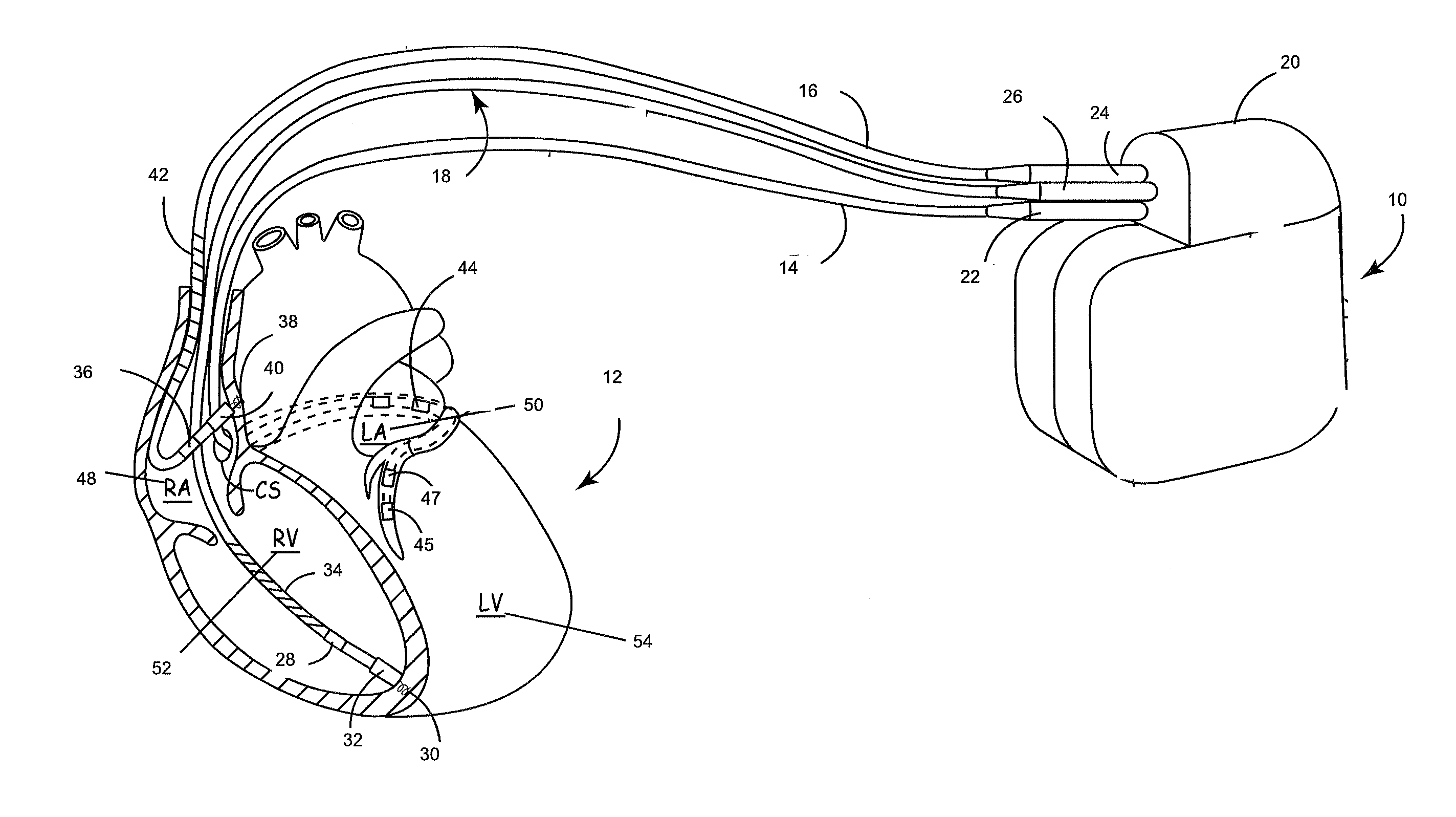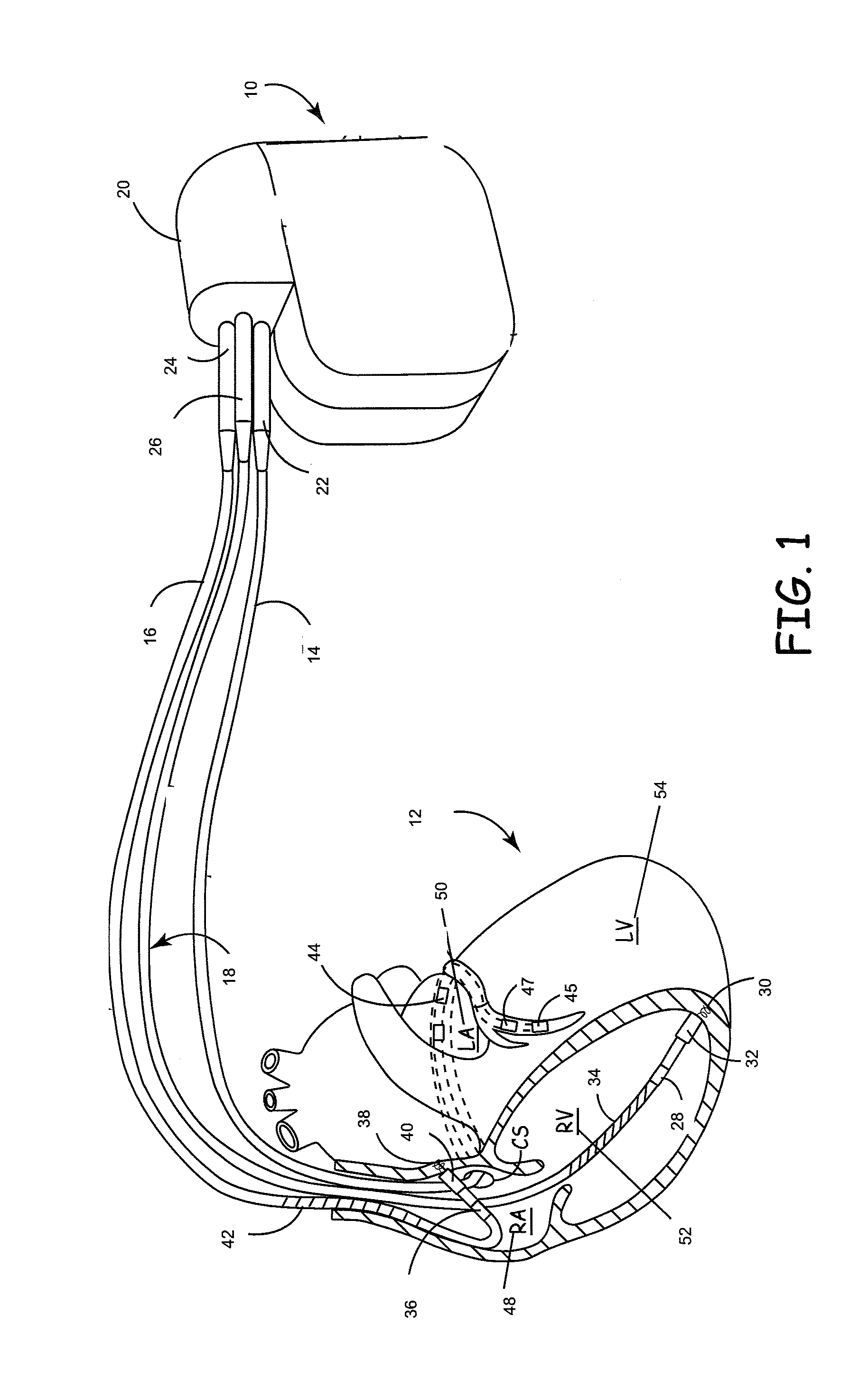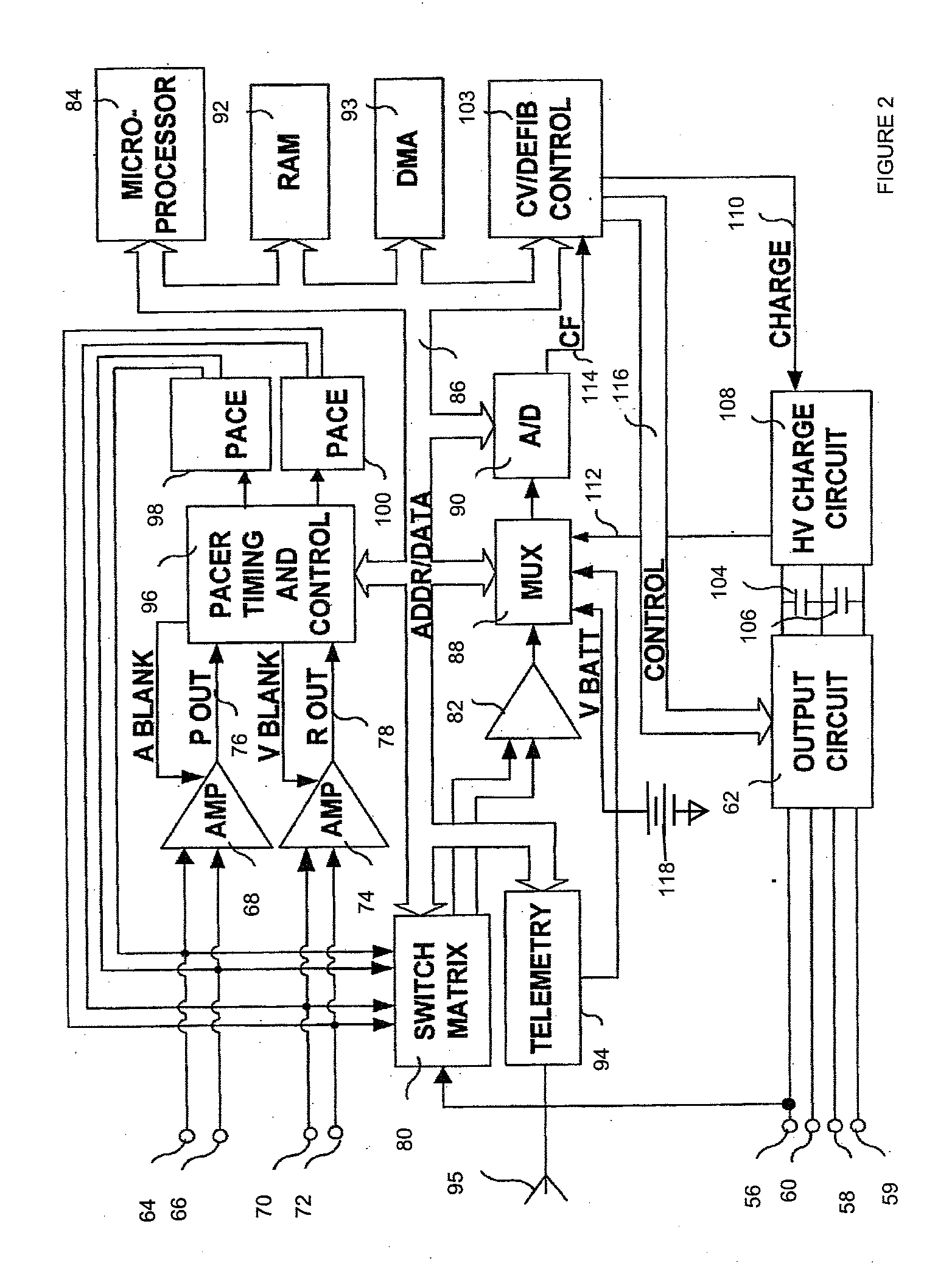Battery longevity estimator that accounts for episodes of high current drain
a technology of longevity estimator and high current drain, which is applied in the direction of instruments, electric devices, therapy, etc., can solve the problemsaffecting the reliability of battery measurements based only on terminal voltage, and affecting the reliability of battery measurements. , to achieve the effect of reducing the accuracy of the relationship between terminal voltage and remaining charge, predicting and accurate relationship
- Summary
- Abstract
- Description
- Claims
- Application Information
AI Technical Summary
Benefits of technology
Problems solved by technology
Method used
Image
Examples
Embodiment Construction
[0027]FIG. 1 is an illustration of implantable medical device 10 implanted in a patient. In the illustrated embodiment, implantable medical device 10 is a cardiac defibrillator with a pacing function. The pacing function may treat bradycardia and may resynchronize heart 12 in conditions of patient heart failure. Such a defibrillator is known as a cardiac resynchronization therapy defibrillator, known in the art as a CRT-D device. In various alternative embodiments, implantable medical device 10 may be a cardioverter / defibrillator without a pacing function or with a pacing function but without a cardiac resynchronization feature. In addition, implantable medical device 10 may be any device which incorporates high current draws from a battery. Implantable medical device 10 is coupled to heart 12 by way of coronary sinus lead 14, right atrial lead 16, and right ventricular lead 18. Connector block 20 receives connectors 22, 24 and 26 positioned on the proximal ends of coronary sinus le...
PUM
 Login to View More
Login to View More Abstract
Description
Claims
Application Information
 Login to View More
Login to View More - R&D
- Intellectual Property
- Life Sciences
- Materials
- Tech Scout
- Unparalleled Data Quality
- Higher Quality Content
- 60% Fewer Hallucinations
Browse by: Latest US Patents, China's latest patents, Technical Efficacy Thesaurus, Application Domain, Technology Topic, Popular Technical Reports.
© 2025 PatSnap. All rights reserved.Legal|Privacy policy|Modern Slavery Act Transparency Statement|Sitemap|About US| Contact US: help@patsnap.com



